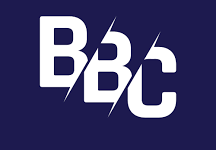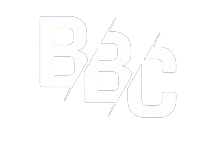Workflow automation tools are no longer a luxury—they’re a competitive necessity. Businesses across every industry are using them to eliminate manual tasks, reduce human error, and create smoother, more efficient operations. These tools help teams speed up tasks, stay organized, and make fewer mistakes, leading to better results without increasing workload.
According to a report by McKinsey & Company, nearly 45% of work activities performed by people can be automated using currently available technology. This shows just how much potential these tools have to change how work gets done. With workflow automation tools, organizations of all sizes are improving customer service, cutting costs, and achieving goals faster than ever.
Why Workflow Automation Tools Are a Game-Changer
Save Time, Work Faster
One of the biggest reasons companies turn to automation is time savings. Employees often spend hours doing the same tasks again and again—such as sending emails, updating spreadsheets, or tracking approvals. Workflow automation tools help businesses eliminate these tasks by automating them. This means employees have more time to focus on creative or strategic work, which adds more value to the company.
A study by Forrester Research found that companies using automation improved task completion speed by over 30%. That kind of boost makes a major difference in a competitive market.
Reduce Mistakes, Improve Accuracy
Manual tasks are prone to human error. A mistyped number or a forgotten follow-up can cause big problems. Automation helps reduce these risks by ensuring that tasks are completed exactly the same way every time. This leads to better accuracy, stronger customer trust, and fewer issues to fix later on.
In industries like healthcare, finance, and logistics, even small mistakes can have serious consequences. Workflow automation tools make sure that everything is tracked and followed step-by-step, helping avoid costly errors.
Boost Team Communication
Many teams struggle with poor communication. Tasks fall through the cracks, or people don’t know what’s next. Automation solves this by making everything visible in one place. Most workflow automation tools include dashboards that show task status, who’s responsible, and what’s next. Notifications and reminders also help everyone stay on track. When people know what’s happening, they can work together more effectively.
Powerful Features That Help You Get More Done
Visual Workflow Builders
These tools often come with simple drag-and-drop builders. You don’t need to write any code. Just drag steps into place and set up the flow of work. This makes it easy for anyone in the team to design or change processes.
App Integration
Workflow automation tools connect easily with popular apps like Google Drive, Slack, Trello, Salesforce, and email platforms. This means your tools can talk to each other. When someone updates a task in one system, it can automatically trigger an update in another.
Instant Notifications
Real-time alerts keep people informed. Whether a task is complete, needs review, or is overdue, team members will know right away. This helps avoid delays and missed deadlines.
Reports and Analytics
Most workflow automation tools include analytics. You can track how long tasks take, spot bottlenecks, and see which steps are slowing things down. These insights help you improve performance over time.
Real Business Results with Workflow Automation Tools
Healthcare
Hospitals and clinics use automation to handle patient registration, lab results, appointment scheduling, and billing. This reduces wait times and improves patient care. Instead of filling out paper forms, everything is handled through smart workflows.
Marketing
Marketing teams automate email sequences, campaign approvals, and social media scheduling. This means they can focus on strategy and creativity instead of repetitive setup tasks. Campaigns run smoother and results come faster.
Human Resources
Onboarding a new employee involves many steps—collecting documents, setting up emails, scheduling training, and assigning tasks. HR teams use workflow automation tools to streamline all of this. New hires have a better experience, and HR staff can handle more with less stress.
Finance
Accounting teams use automation to manage invoices, track expenses, and approve budgets. This ensures that the financial process is smooth, accurate, and timely—without long email chains or missed steps.
Choosing the Right Workflow Automation Tool
There are many options available, and choosing the right one depends on your needs. Here are a few key things to look for:
Easy to Use
A good tool should be simple. If your team can’t figure it out quickly, they won’t use it. Look for platforms with clean designs and helpful tutorials.
Flexible and Scalable
Choose a tool that grows with you. It should work for a small team today and still be useful as your company expands.
Secure and Reliable
Data protection is essential. Make sure the tool offers strong security, including encryption, user controls, and backup features.
Customization
Every business is different. The best workflow automation tools let you create custom workflows that match your exact process instead of forcing you into a template.
Top Workflow Automation Tools You Should Know
Based on user reviews, performance, and features, here are some highly rated workflow automation tools:
Zapier – Known for connecting thousands of apps together and triggering actions automatically. Great for small teams or freelancers.
Monday.com – A visual platform for managing projects, automating tasks, and collaborating with teams. Offers templates and integrations.
Make (formerly Integromat) – Offers advanced features for complex workflows. Allows custom logic and powerful automation paths.
Asana – While mostly a project management tool, it includes automation features for recurring tasks, approvals, and dependencies.
Kissflow – Built specifically for business process automation. Offers advanced controls and is ideal for larger teams with multiple departments.
What Experts Say About Workflow Automation
Experts believe that automation will play a bigger role in the future of work. According to Gartner, 80% of organizations will use some form of automation for their business operations by 2026. This is because businesses see the value: better speed, fewer errors, and lower costs.
One IT manager in a global consulting firm said, “Workflow automation tools helped us reduce turnaround time by 40% and improved our team’s morale. We no longer chase people for approvals or updates—it just happens.”
Common Myths About Workflow Automation Tools
“Automation will take my job.”
This is one of the biggest fears, but it’s not true. These tools are designed to help people, not replace them. They handle the boring stuff so you can focus on work that requires thinking and creativity.
“They’re only for big companies.”
In fact, small businesses often benefit the most. With limited resources, automation helps small teams get more done without hiring more staff.
“Too expensive.”
Many tools have free or low-cost versions. Plus, the time you save often pays for the tool many times over.
“Too hard to set up.”
Modern tools are built to be user-friendly. Most require no coding, and setup can be done in minutes with templates or walkthroughs.
Why You Shouldn’t Wait Any Longer
If your team is still using spreadsheets, sticky notes, or long email threads to manage work, you’re falling behind. Workflow automation tools bring structure, speed, and visibility to your processes. They don’t just make work easier—they help your team grow, deliver faster, and stay ahead of the competition.
The longer you wait, the more time and energy you waste on tasks that could already be automated. Start small if you have to. Automate just one process and see the results for yourself. Once you do, you’ll wonder why you didn’t start sooner.
Conclusion
Workflow automation tools are transforming how modern businesses operate. They help teams save time, improve accuracy, reduce stress, and scale faster. Whether you’re managing projects, onboarding staff, or running marketing campaigns, automation simplifies the process and delivers better results.
If you haven’t started using workflow automation tools, now is the perfect time to explore your options. These tools aren’t just for big companies or tech experts—they’re for any team that wants to work smarter and grow faster.
FAQs
1. What is workflow automation and how does it help?
Workflow automation uses software to handle repetitive tasks, saving time and reducing human errors in daily operations.
2. Can small businesses benefit from automation tools?
Yes, small teams often see big results by streamlining tasks and improving productivity without extra hires.
3. Are automation platforms difficult to use?
Most modern tools are beginner-friendly with drag-and-drop builders and no coding required.
4. What tasks can be automated in a typical office?
Common tasks include approvals, notifications, data entry, onboarding, and email follow-ups.
5. Do these tools integrate with other software?
Yes, they often connect with apps like Google Drive, Slack, Trello, and email services for smoother workflows.
6. How much do automation platforms usually cost?
Many offer free plans, while premium features vary in price depending on business size and needs.
7. Is my data safe when using automation systems?
Most reputable platforms offer encryption, secure backups, and user access controls to protect your data.
8. Will automation tools replace employees?
No, they support staff by reducing busywork so they can focus on more valuable, creative tasks.
9. Can I track performance through these platforms?
Yes, they often include dashboards and analytics to monitor task progress and team efficiency.
10. How fast can I set up my first workflow?
You can usually build and launch a simple automation in under an hour using built-in templates.

